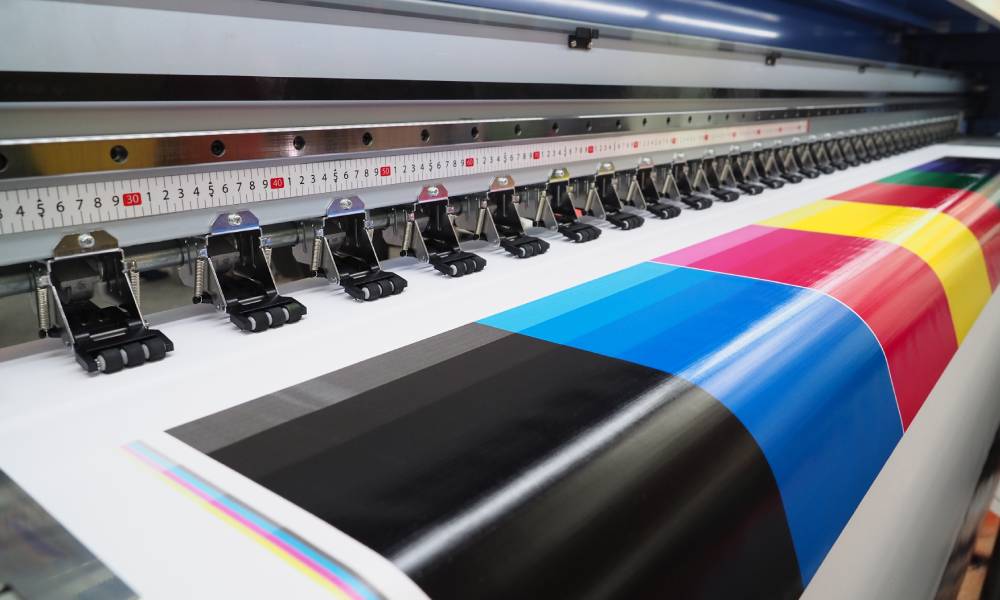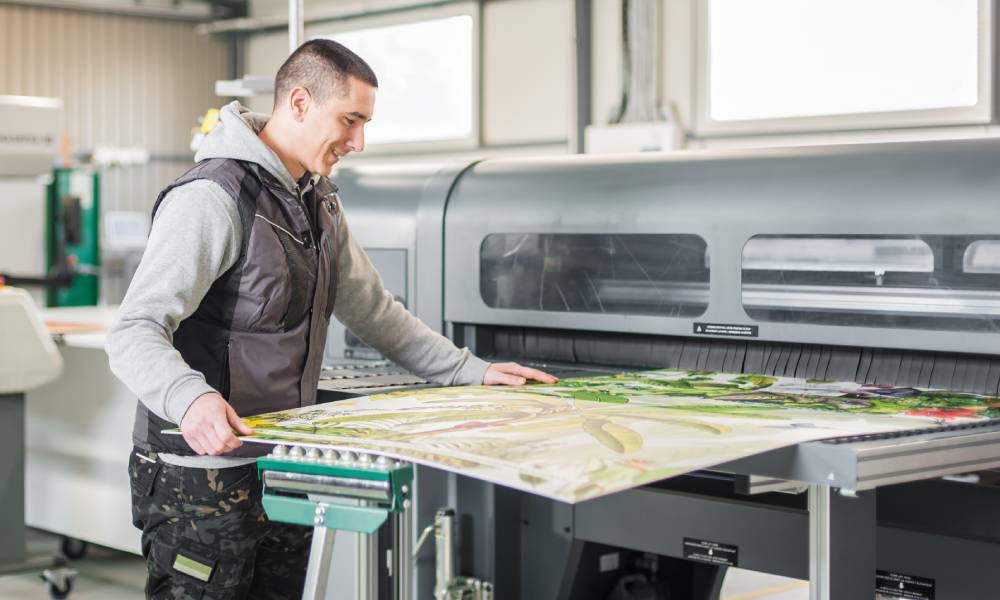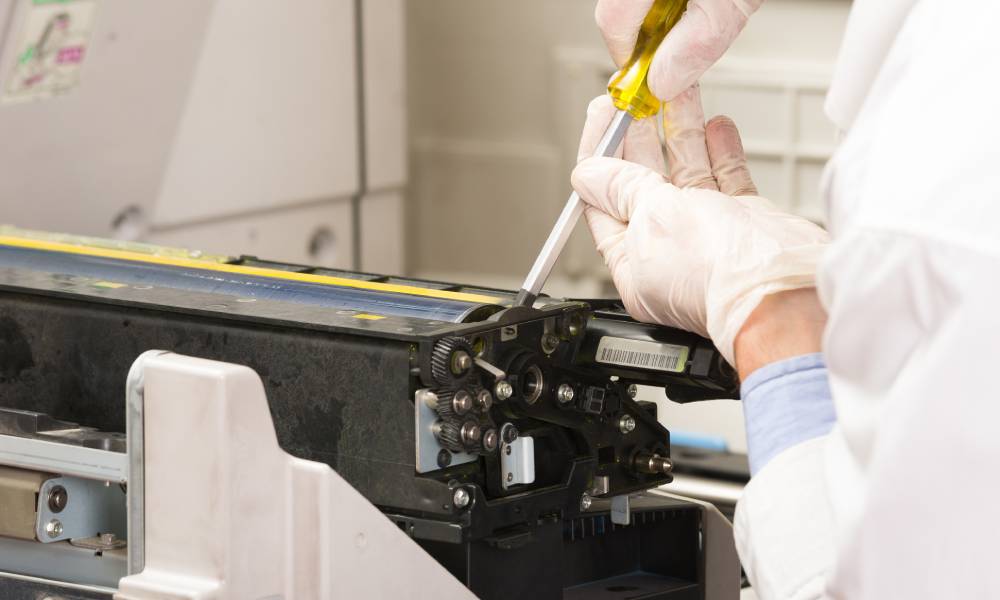Plotter printers are wonderful and efficient devices. But like any tool, they occasionally run into problems. These issues can emerge especially during periods of intense and extended use. Overheating is one big obstacle to plotter printers doing their jobs. It can lead to extended downtime and lost money and result in repair bills. Even worse, it could cause you to replace your printer entirely. The reasons for overheating vary, but you can fortunately prevent issues with a little foresight, care, and planning. Here’s how to avoid overheating your plotter printer and extend its life.
Watch for the Signs
It’s easy to predict when a plotter printer will overheat. You’ll notice several signs of overheating well in advance. Most obviously, it’ll run hot and emit excessive heat. The device may suddenly cease operation as well. Burning smells aren’t uncommon at this juncture as the device transfers its heat to the paper or film in use. The printer’s display or monitor may also show messages describing overheating and cooling issues. If you encounter any of these signs, move swiftly! Shut off the printer and open it up to troubleshoot the problem. You want to see what’s up immediately. In fact, be aware of the possibility of an increase in heat before it gets too far, especially during an extended and intensive printing session.
Let It Breathe
As a first step toward helping your plotter printer keep its cool, so to speak, ensure there’s adequate ventilation in the area where your printer resides. It may be necessary to keep your printer in a smaller, out-of-the-way space. This is fine if the space isn’t too enclosed and lacks ventilation, fresh air, and an inability to discard excessive heat. Make sure your printer has a buffer zone around its perimeter. If it snugly fits against the wall, it can’t breathe and will soon overheat. Keep the vents clean, clear, and free from blockage and blockades. Having a fan nearby to direct airflow around the printer can also help, especially during extended sessions.
Get an Expert’s Eye
If you don’t already have your plotter printer on an inspection and maintenance schedule, establish one now. Speak with the merchant or manufacturer who sold or leased the device to you. No doubt, they have several technicians on staff to visit your facility at least once a year to clean and service the plotter printer. They’ll inspect, adjust, and clean the printer heads and nozzles and check the ink supply. They’ll also vacuum the inside and outside, keep fans and vents clear, and look in on the cooling system. They may also update the device’s software and firmware to address issues that have arisen in other machines—overheating being one. Look in on what the technician is doing and ask if there are any procedures you can follow or basic maintenance you can perform to keep the printer running well and staying cool.
Know the Duty Cycle
Duty cycles note the maximum amount of prints a plotter printer can produce within a particular period. The duty cycle for your printer will be in its manual. It’s also likely that the technicians who install it will inform you about the duty cycle. Once you know it, you must stick to it religiously. It’s not a suggestion. It’s a good standard operating procedure and best practice that ensures your printer doesn’t overheat, wear out, or break down. Plan jobs to stay within the limits. Planning is important because your plotter printer may need to rest and cool down for a while between jobs. You don’t want this sort of downtime to occur in the thick of a particularly intense printing period.
Use the Right Supplies
The temptation to save money by buying cheaper paper (or other media) and toner is great, but it’s sometimes best to resist it. Cheap, bad-quality, and generic materials may react poorly within your printer. Stick to brand-name and manufacturer-recommended supplies to avoid overheating. Furthermore, ensure the media you use is proper for the printer. If the paper, film, canvas, vinyl, or other media is too thick, tacky, or humid, it could become stuck in the rollers, raising the heat and potentially damaging the printer. For example, if a plotter printer requires 20 lb bond paper, you should only use that.
Read the Room (Temperature)
As mentioned above, the quality and size of the room have a huge effect on the plotter printer inside it. Room temperature is a deciding factor in how well many devices operate, especially printers. Keep the room cool. Maintain a comfortable temperature on the thermostat, and adjust it to accommodate a particularly hot day, a warmer region, or an especially huge printing task. Fans can also help keep the external temperature down, as can placing the printer somewhere that’s not in direct sunlight. Drapes, curtains, and shades can also reduce the sun’s heat, especially blackout curtains. But be certain the room still enjoys fresh air and breezes. As for muggy climates and humid rooms, purchase a dehumidifier to reduce the moisture in the air. High humidity can result in pages sticking together and slowing down or jamming the machine.
Listen Up!
Plotter printers should make minimal noise beyond the usual sounds they emit while working. Listen for things like warning tones indicating overheating and strange and unpleasant mechanical sounds that increase intensity. Your printer may be trying to tell you something just before a huge problem occurs! Stay alert, and you’ll forestall expensive repairs and other problems.
What’s Next?
Hopefully, nothing is next, and your printer will continue to provide clean and clear prints with little fuss. But that can only happen if you stay on top of overheating and similar problems. Luckily, with a little foresight, knowledge, and skill, combined with periodic maintenance and inspections, your printer can work for a very long time. It can remain one of your most powerful communication tools. Stay proactive to protect your printing!
That’s a quick guide on how to avoid overheating your plotter printer. Have any other questions? Contact us for a consultation to see how we can provide the printers, paper, and tools you need to succeed.






